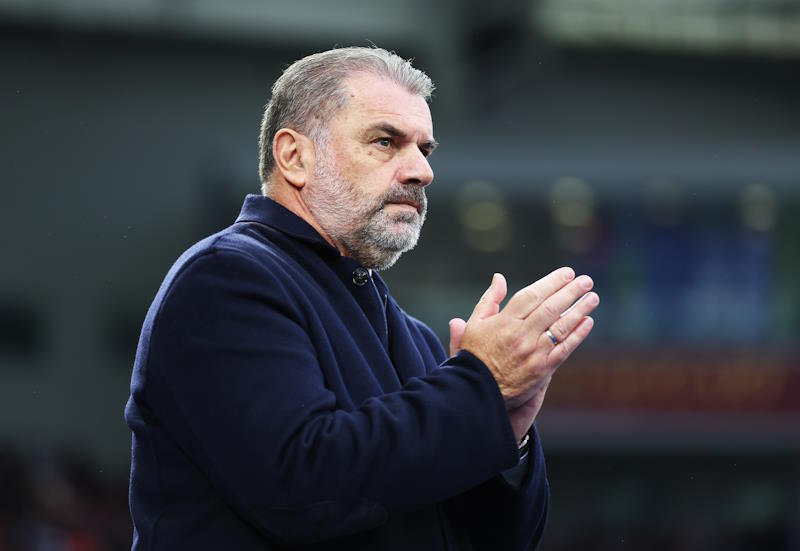
The first World Cup final was a decidedly local affair, with 15,000-odd Argentines making the short trip across the River Plate to see their countrymen lose 4-2 to Uruguay in Montevideo’s recently inaugurated Centenario stadium. While some of the younger spectators from that day are no doubt still alive to tell the story, only one player remains and last week he celebrated a hundred years on this earth.
Francisco Varallo was Argentina’s inside right. A short, stocky figure with a ferocious shot that earned him the nickname Cañoncito, Varallo had risen to fame with Gimnasia La Plata, with whom he won the Argentine league in 1929. Just 20 at the time of the finals, he started the opening game against France and then scored one of the six goals with which Argentina comfortably brushed aside Mexico in their second match.
A knee injury sustained against Chile in the final group game saw him miss their semi-final thrashing of the USA, but he had recovered sufficiently to take to the field for the final. “It was a risk, because there were no substitutions back then,” he recounts. “But it was worth it. I wasn’t going to miss that game for anything in the world!”
As the two teams emerged from the depths of the stadium, they were greeted by just under 100,000 raucous spectators. “There was not room for a pin in the stands,” wrote Uruguayan journalist and poet Eduardo Galeano. The atmosphere was tense, but the home crowd soon had something to cheer for as Pablo Dorado gave Uruguay an early lead. Argentina reacted strongly, however, and were 2-1 up at half-time thanks to goals from Carlos Peucelle and tournament top-scorer Guillermo Stabile.
Early in the second half, Varallo had a chance to write his name in the history books. “I grabbed the ball on the left, kicked it with my heart and soul and it hit the crossbar and bounced away. It was 3-1,” he remembers ruefully. What could have been the defining moment of an Argentine victory soon proved to be the impetus for a Uruguayan fightback. In taking the shot, Varallo aggravated his previous injury and was soon little more than a powerless spectator to a dramatic comeback by the hosts.
Goals from Pedro Cea, Santos Iriate and Hector Castro guaranteed that the Jules Rimet trophy would remain in Montevideo and sent Varallo and Argentina into mourning. The estimated 20,000 who had lined the Avenida de Mayo in Buenos Aires outside the head office of newspaper La Prensa eagerly awaiting updates soon diverged on the Uruguayan consulate, throwing stones and hurling abuse. “How I cried that day,” Varallo recalls. “Even now when I look back it still makes me angry.”
After the World Cup, Varallo moved to Boca Juniors. His 27 goals in 24 games helped lead Boca to the inaugural professional league title in 1931, a triumph they repeated in 1934 and 35. His record of 181 goals stood as the club’s best in the professional era until it was usurped by Martin Palermo in 2008. That tally may even have been higher had he displayed Palermo’s appetite for getting his head on the ball. “Of the 181, only five of those were with my head,” he explains. “I was afraid of heading.”
Varallo remembers his time at Boca Juniors fondly, especially his relationship with team-mate Roberto Cherro. “Maradona was a God, as was Cherro in my time. I am glad that I was fortunate enough to play at his side.” But it wasn’t just on the pitch that he and Cherro hit it off. “In Buenos Aires, a night out with Cherro was sure to be entertaining… we would meet with Gardel at the cafe La Meca. We knew all the artists.”
Varallo’s international swansong came at the 1937 Copa America, held in Buenos Aires. He scored both goals in the opening game victory over Chile, adding one more against Uruguay on Argentina’s route to a fifth regional crown. He never fully recovered from the knee injury he sustained at the 1930 World Cup and retired from professional football just two years after that Copa America triumph, aged 29.
Unlike many of his peers, Varallo decided against a career in coaching, preferring to live a quiet life away from the spotlight in La Plata upon retiring from the game. “Here in La Plata everybody knows me: old folks, young people, children… they all say hello to me.” And with his advancing years he appears to finally be getting the credit that his achievements deserve. “Now I’m old, more tributes are being paid to me than before. It seems I’m still important.”
Related Articles:
- – Economic Crisis Changes Brazilian Game
- – The Serbian Who Shone in Brazil: Dejan Petkovic
- – Should Brazil Ditch European League Model?












